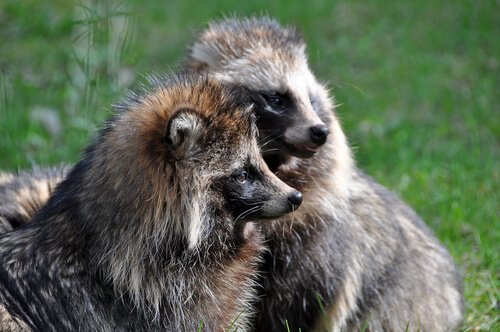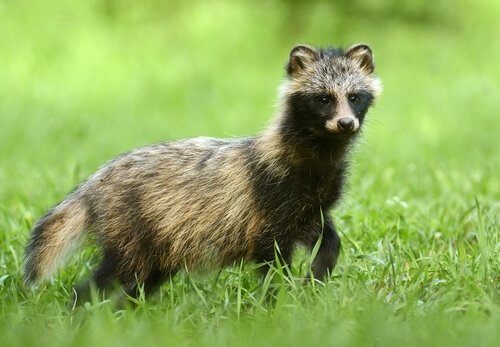The Tanuki: Is it a Raccoon or a Dog?

Although it sounds like an impossible dream, a lot of us would love to keep our favorite wild animals as pets. However, it’s not that crazy a dream for those who like raccoons. Let’s talk about the Tanuki, a very funny Japanese raccoon dog with interesting characteristics.
At first glance, you wouldn’t be able to tell if it’s a raccoon or a dog. In today’s article, we’re going to look more into this animal and learn some interesting things about this peculiar species.
Origin
They come from the East; to be exact, China and Japan. However, over the years they have come to the Caucasus region, and now some can be seen in Russia and Europe.
It appears to be the oldest dog that exists in Japan and has been part of Japanese sayings and folklore since ancient times. Formerly, its name, Tanuki, was used to describe medium-sized mammals, such as wild cats.
Japanese folklore
This animal is mischievous and it was said to be able to change shape and even ‘disguise’ himself as other animals as a defense method. In Japan, they have erected statues of Tanukis that have turtle shells on their backs.
His stomach is exaggeratedly in these statues, as well as his testicles. They are now silly but funny images that are a part of Japanese culture and folklore.
Sometimes, these statues carry their testicles on their backs, or use them as drums. It seems that the Japanese started depicting the Tanuki during the Kamakura era. However, during this era, in general they began to make more sinister images of the animals.
The Japanese even invented legends and stories in which Tanuki deceived monks and hunters using their disguises. They were also known as a symbol of fortune having 8 special features:
- A hat to protect them from problems and bad weather
- Big eyes to see what’s going on and to help make decisions
- Sometimes, they carry a bottle of sake as a symbol of virtue
- Their long tail that gives one the security to be successful
- Big testicles for money
- Strong confidence
- A large stomach that represents decisions made with boldness and calmness
- A smile that represents friendship
Because of all of these characteristics, the Tanuki is a highly-valued and loved animal in the eastern regions.
Interesting facts about the Tanuki

In addition to the statues and folklore the Japanese created around these animals, they have many interesting characteristics that attract people’s attention. For example:
- Reproduction. They are monogamous animals, something not very common in an animal species. They choose a partner for life. Since they’re not an aggressive species, they don’t fight for their partner. However, they do compete for the females through their smells. When females give birth, they go out to hunt while the father takes care of the puppies. There are usually between 5 and 7 of them.
- Fear can kill them. Fear paralyzes them and it can even kill them. For example, if they’re crossing a road and a car turns its lights on, they will be so petrified that they won’t be able to move. Unfortunately, thousands of them die in traffic accidents as a result of this.
- Hibernation. Although dogs don’t hibernate, the Tanuki does in the winter. It accumulates fat in the summer so that it can hibernate throughout the winter.
- They aren’t from the raccoon family. Despite their incredible resemblance, raccoons and Tanuki are not related. Tanuki are related to wolves and dogs.
- Appearance. They look like big foxes, they weigh between 9 and 20 pounds and can measure over one and a half feet. They have thick hair that protects them from the cold because they live in cold areas. Its tail is thick and long (like that of a raccoon) and it has short ears.
Conclusion
This is a very curious and funny animal that still lives in its natural habitat. However, we may seem them as pets in the future because of their kind demeanor.